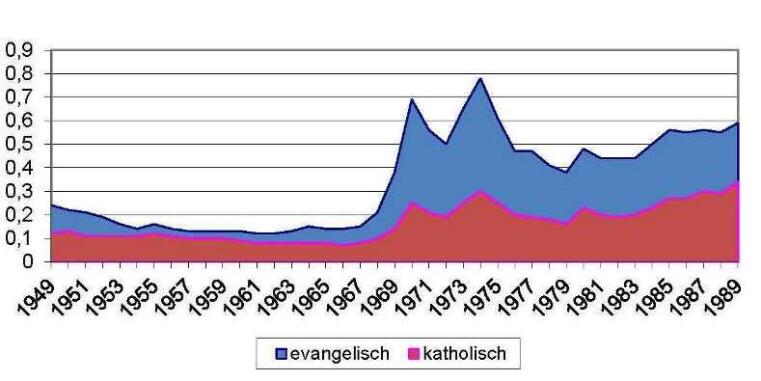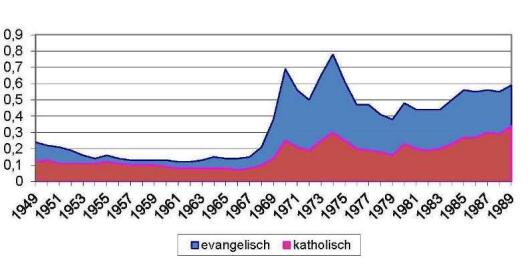

How are the striking transformation of Christian churches and their practices and the significant social and societal developments of the last decades interrelated? The sociological project 'Statistical timeseries on church life from 1949 to 2010' – conducted between 2013 and 2015 – provides data that facilitates a detailed analysis of the development of the two large Christian churches since World War 2 against the backdrop of the socio-economic and cultural changes in the German Federal Republic and the (former) German Democratic Republic.

Statistical data on church life has been compiled in various ways over the years. In this project their compilation has been based mainly on numbers collected by the churches themselves. The first two parts of the compilation contain data on the Evangelical and the Catholic Church – on membership, entries and exits, occasional services like weddings or baptisms, church visits, as well as on church personnel – presented as timeseries between 1949 to 2010. A third part compiles data on socio-economic indicators from the German Federal Republic and the (former) German Democratic Republic (population-structure, family-structures, GDP, income development, tertiarisation, urbanisation, etc). The extensive statistical material allows to examine in-depth the connection and correlation of church data and socio-economic and cultural developments in the GFR and the former GDR.
The project was funded by the Social Science Institute (SI) of the Evangelical Church in Germany (EKD) in Hannover. The research was conducted at the Center for Religion and Modernity, University in Münster, by Dr. Michael Krüggeler and the project leader Prof. Dr. Detlef Pollack. The results of the project can be accessed as datasets in the HiStat database of the GESIS Data Archive. A more detailed description of the project’s goals, methods, and data can be found here. Registration is required to access and download the datasets on the GESIS/HiStat website.
Project Team Members

Dr. Michael Krüggeler
Dr. Michael Krüggeler was a former research assistant in the 2015 completed project 'Statistical timeseries on church life from 1949 to 2010'.

